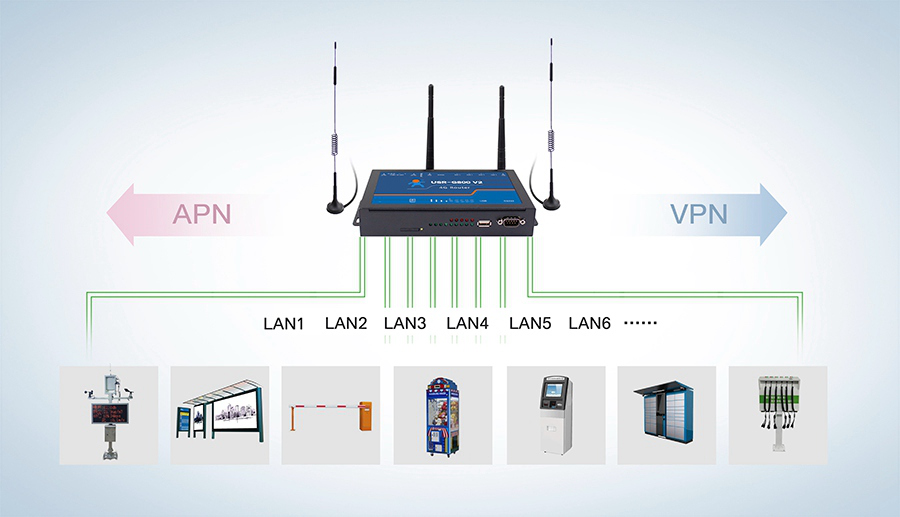The industrial router is a kind of Internet of Things communication networking device. Through cellular networks, it provides users with fast networking solutions. Generally, the industrial router adopts high-performance embedded CPU with a working frequency of up to 580MHz. Based on various hardware interfaces and powerful software functions, users can quickly establish their own application network. The industrial router is also a mature networking device in mature industrial projects. It has been widely used in the M2M industry of the Internet of Things industry chain, providing reliable data transmission networking for smart power grids, personal healthcare, smart homes, self-service terminals, industrial automation and other fields.

How is it different from a home router? The reason why the industrial router has the word "industry", is its differences from the home router: it can guarantee the normal communication work in the extremely cold and hot environment, and provide hardware protective functions such as electromagnetic isolation, anti-static function, anti-surge function and anti-jamming function. Also, it can adopt complex topology structures of network, load sharing and optimal path. It is simply categorized as follows:
Different Stability: The industrial router usually provides a stable network environment for data transmission in industrial communications, such as internal watchdog protection, to ensure 7x24-hour stability without downtime. The data loss caused by network failure may cause a loss to the whole project. However, the common home router cannot work for a long time, especially in the outdoor environment, it is possible for the home router to disconnect the network.
Different working environment: The industrial environment is complex and diverse. It needs to work stably in the four seasons including cold winter and hot summer, and it needs to be anti-surge in water conservancy projects, carry out underground exploration, prevent interference caused by high voltage power environment, etc. The components of industrial routers are different in design from household routers, which can ensure stable networking in the environment of -35℃ to 75℃.
Different hardware protection: In the field of industrial networking, an industrial router is usually a device with a serial port or connected to a network port for matching the serial port equipment on the project.
Different software functions: The requirement of home routers is to achieve normal networking, while home routers usually only have networking functions, and some home routers may also have security functions such as firewalls. In addition to networking functions, industrial routers should have static routing, port forwarding, VPN private network transmission, load balancing, peanut shell Intranet penetration, dynamic domain name resolution, remote management and other functions to meet the requirements of the industrial scene.
In addition to Web page setup, hostname and time zone setup, NTP setup, user password setup, parameter backup upload, remote firmware upgrade, device restart and factory setup, log view and other basic functions, what other functions are there?
· Support APN of operator private network and VPN of virtual private network (including VPN client and VPN sever), and VPN supports PPTP and L2TP protocols;
· Support QOS management services, set device priority and bandwidth limitation for devices and applications, and manage various networked servers more easily;
· Support DHCPserver and DHCPclient, DHCP binding MAC address, real-time display of data transmission rate and other functions;
· Support TCP/IP, UDP, FTP, HTTP and other network protocols, easy to use, flexible, a variety of working mode choices;
· Easy system configuration and maintenance interfaces (both local and remote WEB and CLI modes);
· Support multiple WAN connection modes, including static IP, DHCP, L2TP, PPTP, PPPOE, 2G/3G/4G;
· Support remote management, SSHD, HTTPS and other functions;
· Support multiple WAN connection modes, including static IP, DHCP, L2TP, PPTP, PPPOE, 2G/3G/4G;
· Support local and remote online upgrade, import and export configuration profile. Support NTP, has the RTC built in;
· Support a variety of DDNS at home and abroad;
· Support MAC address cloning, PPPoE server;
· Supports multiple up-and-down trigger modes, including SMS, phone ringing, serial port data and network data triggering.

